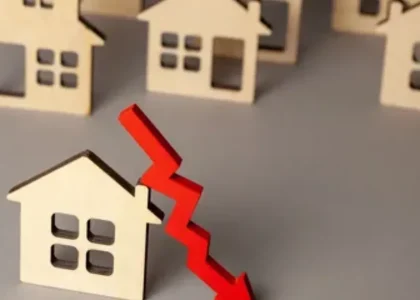Understanding the Impact of Rising Interest Rates on Affordability

The affordability of housing is a critical consideration for individuals and families seeking to purchase a home or refinance their existing mortgage. While various factors influence affordability, one of the most significant determinants is the prevailing interest rate environment. When interest rates rise, the cost of borrowing increases, thereby affecting the affordability of homes for prospective buyers and potentially altering the financial landscape for existing homeowners.
Explaining Interest Rates and Affordability
Interest rates represent the cost of borrowing money, typically expressed as a percentage of the loan amount. For homebuyers, mortgage interest rates are of particular importance, as they determine the amount of interest paid over the life of the loan. Affordability, on the other hand, refers to the ability of individuals or households to purchase a home without experiencing financial strain.
Historical Context: Trends in Interest Rates

To understand the current impact of rising interest rates on affordability, it’s essential to examine historical trends. Over the past several decades, interest rates have experienced periods of fluctuation, influenced by various economic factors such as inflation, monetary policy decisions, and market conditions.
The Relationship Between Interest Rates and Housing Affordability
The relationship between interest rates and housing affordability is inherently intertwined. When interest rates are low, borrowing costs decrease, making homeownership more accessible to a broader segment of the population. Conversely, rising interest rates can erode affordability, as higher mortgage payments strain household budgets and limit purchasing power.
How Rising Interest Rates Affect Mortgage Payments

Rising interest rates directly impact mortgage payments, as borrowers are required to pay a higher rate of interest on their outstanding loan balance. Even a modest increase in interest rates can lead to a significant rise in monthly mortgage payments, potentially rendering homes less affordable for prospective buyers.
Impact on Home Prices: Balancing Supply and Demand
In addition to affecting affordability directly, rising interest rates can influence home prices by altering supply and demand dynamics. As affordability declines due to higher borrowing costs, demand for homes may soften, putting downward pressure on prices. Conversely, in regions with robust economic growth and limited housing supply, the impact of rising interest rates on home prices may be less pronounced.
Regional Disparities in Affordability

It’s important to recognize that affordability challenges vary by region, with some areas experiencing more significant impacts from rising interest rates than others. Factors such as local economic conditions, housing supply, and demographic trends can contribute to regional disparities in affordability, highlighting the need for targeted strategies to address these issues effectively.
Strategies for Homebuyers in a Rising Rate Environment
For prospective homebuyers navigating a rising rate environment, several strategies can help mitigate the impact of higher borrowing costs. These may include exploring alternative loan options, such as adjustable-rate mortgages, improving credit scores to qualify for lower interest rates, and considering more affordable housing markets or property types.
Tips for Existing Homeowners

Existing homeowners facing rising interest rates may also need to reassess their financial situation and explore options for managing their mortgage payments effectively. Refinancing to secure a lower interest rate, accelerating mortgage payments to reduce overall interest costs, and exploring government assistance programs are potential strategies to consider.
Government Policies and Interest Rate Dynamics
Government policies, including monetary policy decisions by central banks, play a significant role in shaping interest rate dynamics and, by extension, housing affordability. Understanding how these policies impact interest rates can provide valuable insights into future affordability trends and guide decision-making for homeowners and policymakers alike.
Economic Factors Driving Interest Rate Changes

Economic factors such as inflation, employment trends, and GDP growth also influence interest rate changes. Monitoring key economic indicators can help stakeholders anticipate shifts in interest rates and make informed decisions regarding homeownership, investment, and financial planning.
Forecasting the Future of Interest Rates and Affordability
While predicting future interest rate movements with certainty is challenging, economists and analysts rely on various indicators and models to forecast trends. By staying informed about economic developments and market conditions, individuals can better prepare for potential changes in affordability and adjust their housing plans accordingly.
Navigating Affordability Challenges in a Rising Rate Environment

Rising interest rates pose significant challenges for housing affordability, impacting both prospective homebuyers and existing homeowners. By understanding the relationship between interest rates and affordability, adopting proactive strategies, and staying informed about economic trends, individuals can navigate these challenges effectively and make informed decisions regarding homeownership and financial planning. Ultimately, a proactive approach to managing affordability in a rising rate environment is essential for achieving long-term housing stability and financial well-being.
Click here for more visited Posts!





